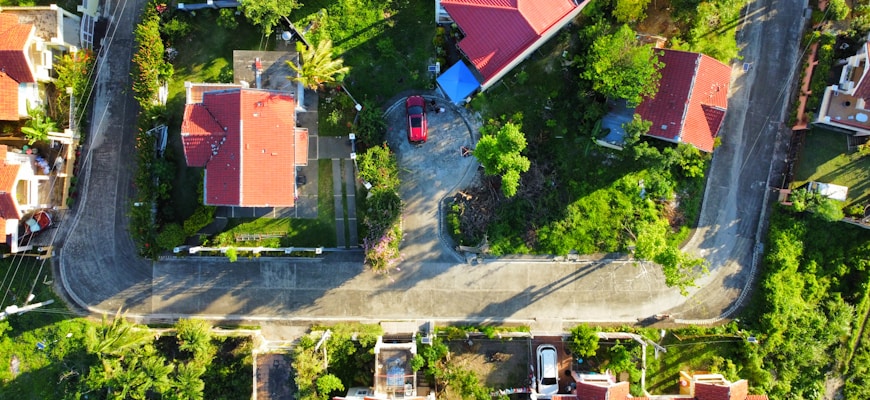- Unlocking Real Estate: How Fractional Ownership is Changing the Game
- Democratizing Property Investment: The Rise of Shared Ownership
- From Dream Homes to Investment Portfolios: The Evolution of Fractional Ownership
- Navigating the Future: Technology’s Role in Fractional Real Estate
- Affordability Meets Opportunity: The Benefits of Fractional Ownership
- A New Era of Homeownership: Exploring the Potential of Fractional Models
Unlocking Real Estate: How Fractional Ownership is Changing the Game
Fractional ownership is revolutionizing the real estate market by making property investments more accessible than ever before. This innovative model allows multiple investors to share the costs of purchasing and maintaining real estate, thus lowering the financial barrier to entry. As a result, more individuals can participate in the lucrative real estate sector, diversifying their investment portfolios.
One of the primary advantages of fractional ownership is the ability to invest in high-value properties that may have been previously unaffordable. This democratization of real estate enables a broader audience to benefit from property appreciation and rental income. Additionally, fractional ownership provides flexibility, allowing investors to use their share of the property personally or generate passive income through rentals.
- Lower Investment Threshold: Fractional ownership reduces the capital required to invest in real estate, allowing more people to take part in the market.
- Shared Responsibilities: Co-owners share the burden of property maintenance and management, making it easier for individuals to invest without the stress of full ownership.
- Diversified Portfolios: By participating in fractional ownership, investors can diversify their portfolios across multiple properties and locations.
- Access to Premium Properties: This model opens the door to luxury properties that would typically be out of reach for individual investors.
The rise of technology platforms designed for fractional ownership is also enhancing accessibility. These platforms streamline the investment process, allowing potential investors to browse properties, understand ownership structures, and complete transactions online. This ease of use is attracting a new generation of investors who are comfortable navigating digital spaces.
In conclusion, fractional ownership is transforming the landscape of real estate investments. By making property ownership more attainable, it offers individuals the opportunity to participate in a market that was once considered exclusive. As this trend continues to grow, it is likely to reshape the future of real estate, fostering a more inclusive investment environment.
Democratizing Property Investment: The Rise of Shared Ownership
The concept of shared ownership has transformed the landscape of property investment, making it more accessible to a broader audience. Traditionally, investing in real estate required significant capital, often limiting opportunities to high-net-worth individuals. However, the rise of shared ownership allows multiple investors to pool their resources, reducing individual financial burdens while still enabling participation in lucrative real estate markets.
This democratization of property investment not only opens doors for novice investors but also encourages diversification. By owning fractional shares in multiple properties, investors can mitigate risks associated with market fluctuations. This model fosters a sense of community among investors, as they collectively benefit from property appreciation and rental income.
- Accessibility: Shared ownership allows individuals from various financial backgrounds to invest in real estate.
- Lower Entry Costs: Fractional ownership reduces the financial barrier, enabling more people to enter the market.
- Diversification: Investors can spread their investments across different properties, lowering risk exposure.
- Community Benefits: Investors can collaborate and share insights, creating a supportive network.
- Flexible Investment Options: Shared ownership offers various structures, accommodating different investment strategies.
As shared ownership continues to gain traction, innovative platforms are emerging to facilitate these investments. Technology plays a crucial role in streamlining processes, from property selection to transaction management. With improved transparency and reduced friction, potential investors can feel more confident in their decisions.
In summary, the rise of shared ownership represents a significant shift in the real estate investment paradigm. By breaking down financial barriers, it not only empowers individuals to invest in property but also fosters a collaborative approach to wealth building. As the market evolves, shared ownership is likely to play a pivotal role in shaping the future of real estate accessibility.
From Dream Homes to Investment Portfolios: The Evolution of Fractional Ownership
The concept of fractional ownership has undergone significant transformation, evolving from a niche approach to an increasingly popular investment strategy. Initially, fractional ownership was primarily associated with vacation homes, allowing multiple individuals to share the costs and benefits of luxury properties. This model has expanded, paving the way for a diverse range of options in real estate.
Today, fractional ownership not only encompasses residential properties but also includes commercial real estate and various investment portfolios. This diversification has made real estate investments more accessible to a broader audience, breaking down the barriers that once confined ownership to affluent individuals.
- Dream Homes: Fractional ownership enables people to co-own vacation homes, offering an affordable entry point into the luxury market.
- Commercial Properties: Investors can now partake in ownership of office buildings, retail spaces, and more, spreading financial risk.
- Investment Portfolios: Fractional ownership allows investors to diversify their portfolios, minimizing exposure while maximizing potential returns.
- Technological Integration: Online platforms facilitate fractional ownership transactions, making it easier for individuals to invest in real estate.
The shift towards fractional ownership signifies a broader trend in real estate accessibility. Investors now have the opportunity to engage with properties they might not afford individually. This method not only democratizes real estate investment but also encourages a communal approach to property ownership.
As the market continues to evolve, fractional ownership is set to become a cornerstone of real estate investment strategies. By embracing this innovative model, individuals can enjoy the benefits of property ownership while participating in a dynamic and collaborative investment landscape.
Navigating the Future: Technology’s Role in Fractional Real Estate
The evolution of technology is significantly transforming the landscape of fractional real estate ownership. As more individuals seek to invest in properties without the burden of full ownership, innovative solutions are emerging to facilitate this trend. Fractional ownership allows multiple investors to share the costs and benefits of real estate, making it a more accessible option for diverse demographics.
Advanced platforms are now providing seamless access to fractional real estate opportunities. These platforms utilize cutting-edge technology to streamline the investment process, allowing potential buyers to explore a variety of properties with ease. By employing smart contracts and blockchain technology, transactions become more transparent and secure, reducing the risks typically associated with real estate investments.
- Enhanced accessibility: Technology enables investors from different backgrounds to participate in the real estate market.
- Improved transparency: Blockchain technology ensures that all transactions are recorded and verifiable, fostering trust among investors.
- Efficient management: Property management solutions powered by AI and automation simplify the maintenance and oversight of shared properties.
- Data analytics: Investors can leverage data-driven insights to make informed decisions about their fractional ownership investments.
Moreover, virtual reality (VR) and augmented reality (AR) technologies are reshaping the way investors experience properties. These immersive tools allow potential buyers to conduct virtual tours of real estate, providing a realistic sense of the space before making a financial commitment. This technology not only enhances the shopping experience but also helps in making well-informed decisions.
In conclusion, technology is playing a pivotal role in the future of fractional real estate ownership. By improving accessibility, transparency, and management, it effectively democratizes real estate investment, allowing more individuals to benefit from this lucrative market. As technology continues to advance, the potential for fractional ownership in real estate is only set to grow, making it an exciting opportunity for both seasoned investors and newcomers alike.
Affordability Meets Opportunity: The Benefits of Fractional Ownership
Fractional ownership is revolutionizing the way individuals approach real estate investment, making it an attractive option for many. This innovative model allows multiple parties to share the costs and benefits associated with property ownership, significantly reducing the financial burden traditionally associated with buying real estate.
- Reduced Financial Barrier: By enabling shared ownership, fractional ownership lowers the entry point for acquiring valuable assets, making real estate accessible to a wider audience.
- Diverse Investment Opportunities: This model opens the door to various types of properties—from luxury vacation homes to commercial spaces—allowing investors to diversify their portfolios.
- Shared Costs: Maintenance, property taxes, and other expenses can be split among the owners, creating a more manageable financial commitment.
- Flexible Usage: Fractional ownership provides the advantage of enjoying a property without the full responsibility of sole ownership, offering the ability to vacation or invest in multiple locations.
- Potential for Appreciation: As property values rise, fractional owners can benefit from appreciation, turning their investments into profitable ventures over time.
This model not only makes real estate investment feasible for those with limited funds but also fosters a sense of community among co-owners. By pooling resources, individuals can unlock the potential of premium real estate without bearing the full cost alone. As the trend of fractional ownership continues to grow, it is poised to reshape the landscape of property investment, making it a viable option for many aspiring investors.
A New Era of Homeownership: Exploring the Potential of Fractional Models
The concept of fractional ownership is reshaping the landscape of homeownership, offering innovative solutions for potential buyers. This new era emphasizes accessibility, allowing individuals to invest in real estate without the burden of full ownership. Fractional models not only reduce financial barriers but also introduce a shared responsibility framework, which can lead to a more sustainable approach to property investment.
With fractional ownership, multiple investors can collectively acquire a property, thus distributing costs and risks. This model is particularly appealing in high-demand markets where traditional homeownership is often out of reach. By pooling resources, buyers can enjoy the benefits of real estate investment while minimizing individual financial exposure. Furthermore, fractional ownership can enhance community engagement, as co-owners often collaborate on property management and maintenance.
- Cost-Effective Investment: Fractional ownership lowers the entry point for aspiring homeowners, making real estate investment accessible to a broader audience.
- Diverse Portfolio Opportunities: Investors can diversify their holdings by participating in multiple fractional ownerships across various locations and property types.
- Shared Management Responsibilities: Co-owners can share the responsibilities of property upkeep and management, fostering a sense of community and collaboration.
- Investment Flexibility: Fractional ownership provides flexibility in investment strategies, allowing for easier entry and exit points compared to traditional ownership.
As the real estate market continues to evolve, fractional ownership models are becoming increasingly viable. They cater to a new generation of buyers who prioritize flexibility, collaboration, and community involvement. By embracing these innovative approaches, the future of homeownership can become more inclusive, paving the way for a diverse array of investors to participate in the housing market.
In conclusion, fractional ownership is not just a trend; it represents a significant shift in how individuals approach real estate investment. By breaking down traditional barriers, this model presents a unique opportunity for a wide range of buyers to engage in homeownership, ultimately leading to a more balanced and equitable real estate landscape.









